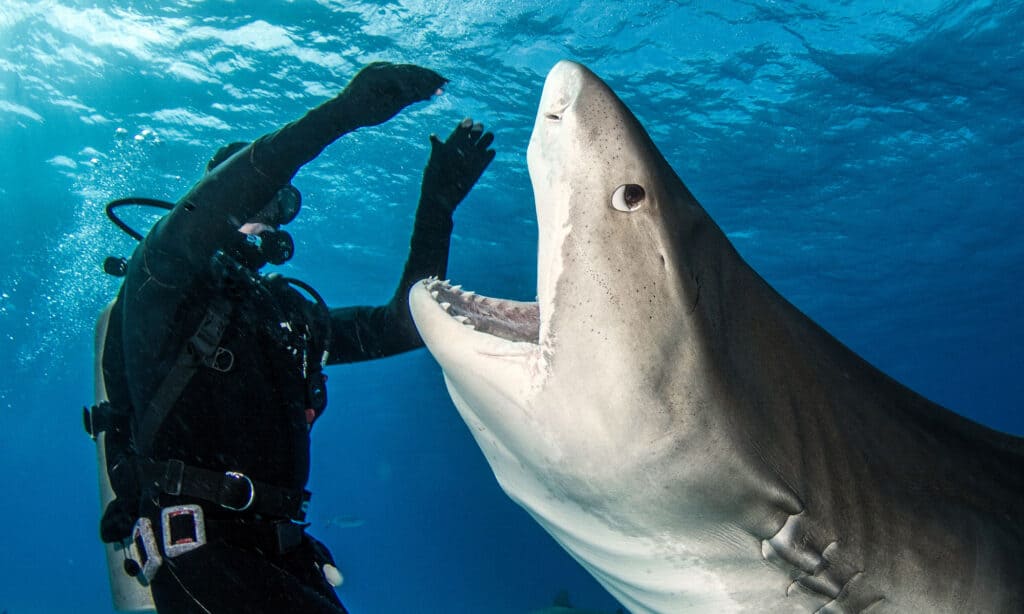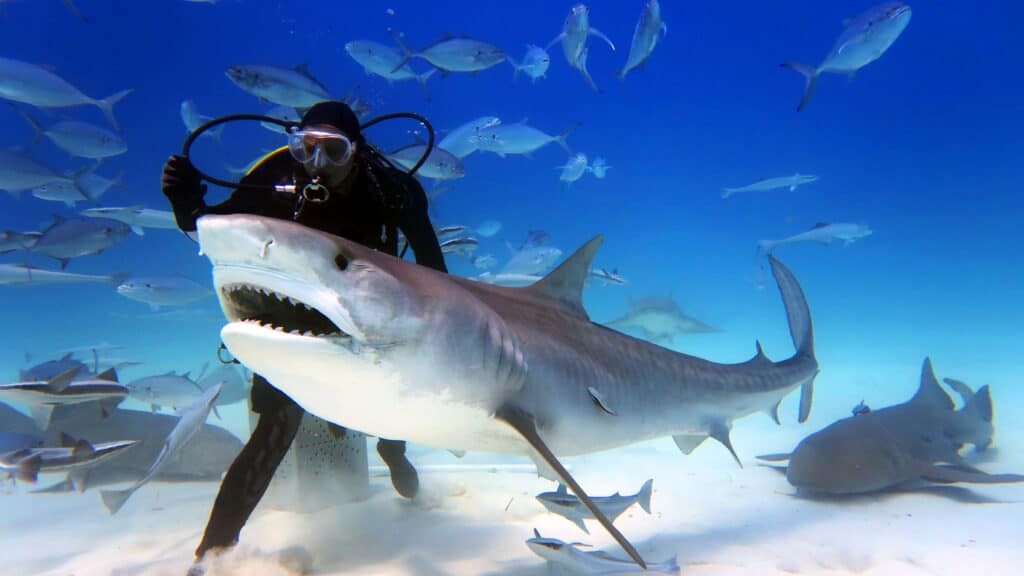This Is a Video of a Tiger Shark Being Knocked Out!
No matter who you are, the thought has crossed your mind at least once that a shark is waiting to eat you in the ocean. Since Shark Week has been around, it has become apparent that sharks aren’t likely to hunt for a human. In fact, 700 people die every year from toasters going wonky. That is around seven times the average shark attack statistics.

While
tiger
sharks are non-aggressive and docile, they are the second leading shark for shark attacks.
©iStock.com/Sean Craft
Still, getting into a massive ocean with little visibility can be intimidating, knowing those kinds of creatures are in the water. What would you think about swimming with tiger sharks? Not everyone would jump at the chance to do that, only a few brave souls. While it may seem like a dangerous endeavor, it can actually be a very exhilarating and rewarding experience. In this footage, you’ll see two scuba divers named Eli and Matt do more than just swimming with tiger sharks.
Tiger sharks can be anywhere from 10 to 14 feet long and weigh a whopping 1,400 pounds. Can you imagine being next to multiple of them with all those teeth too? Eli and Matt handle them well at Tiger Beach since they are experts. One shark, in particular, was a little sassy. They named her Jitterbug because she tries to get a little bitey. One of the divers constantly has to redirect her using special techniques to keep her in line. It takes excellent skills to be a shark whisperer.

Tiger sharks can be anywhere from 10 to 14 feet long and weigh 1,400 pounds.
©Tomas Kotouc/Shutterstock.com
They are interested in Jitterbug because she’s an ideal candidate for an accelerometer and GPS tag. Accelerometer devices can be used to reconstruct a high-resolution record of shark body movements and track a shark’s location. Matt attempts to place the device on Jitteerbug’s tail, but she is too fast. Eli has a great idea of how to get her to relax. He’ll put her in a state of tonic immobility by rubbing her nose. This calms sharks because they have small electroreceptors called the ampullae of Lorenzini.
Ampullae of Lorenzini are small electroreceptors located around the head and under a shark’s snout. They help sharks detect tiny electrical impulses from prey and are extremely sensitive to touch. After Eli puts her in a state of tranquility that basically knocks her out, he lets go of her. Matt now has the chance to place the device without Jitterbug nipping at them or getting away. He seamlessly swims to Jitterbug and places the device gently on her tail fin.

Sharks have small electroreceptors called Ampullae of Lorenzini that can be touched to put them in a state of tonic immobility.
©HQuality/Shutterstock.com
The mission is now completed, and Jitterbug didn’t put up any resistance, thanks to Eli’s calming technique and Matts’s efficiency at placing the accelerometer and GPS tag. Want to see what it’s like to be a shark whisperer? Watch how Eli and Matt work their magic with Jitterbug. Notice the techniques they use to keep her calm and under control. It takes a lot of experience and skill to interact with these apex predators, but it’s worth it for the valuable data they can collect from them. Don’t forget to share if you enjoyed the video!
Other Amazing Animal Videos You Might Like
A diver in New Zealand happens upon a group of orcas. While he quickly swims to safety, a dog retrieving a stick in the water suddenly notices the large sea beasts too. Watch as he also instinctively paddles towards the shore, nearly escaping!
The photo featured at the top of this post is © HQuality/Shutterstock.com
Thank you for reading! Have some feedback for us? Contact the AZ Animals editorial team.






